Environmentalism, Activism & Feminism
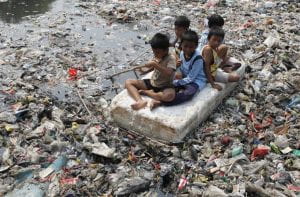 Environmental degradation affects women and children more drastically than men in regions all over the world. In many areas, indigenous women are responsible for feeding, clothing, and fetching water for their families. Based on this, women feel the brunt of environmental changes the most. For example, women who have to fetch water for their families, may discover their water source has been contaminated by toxic chemicals from factory run-off. In areas of the world where poverty is rampant, children risk their health and educations in order to help bring in some money. This can be seen in the daily lives of children living in the slums in Reciefe, Brazil. Children submerging themselves in polluted canals to search for aluminum to sell. “These children should be at school, instead they are helping their family try to survive” (Corrêa).
Environmental degradation affects women and children more drastically than men in regions all over the world. In many areas, indigenous women are responsible for feeding, clothing, and fetching water for their families. Based on this, women feel the brunt of environmental changes the most. For example, women who have to fetch water for their families, may discover their water source has been contaminated by toxic chemicals from factory run-off. In areas of the world where poverty is rampant, children risk their health and educations in order to help bring in some money. This can be seen in the daily lives of children living in the slums in Reciefe, Brazil. Children submerging themselves in polluted canals to search for aluminum to sell. “These children should be at school, instead they are helping their family try to survive” (Corrêa).
Poverty and filth are not the only issues plaguing Brazil. Brazil is a  Christian country and as such their values, ideals, and traditions are rooted in the church. Ivone Gebara, author of A Latin Perspective explains how the Christian church continues to oppress women with its patriarchal beliefs. “Power is a man’s issue, especially public power. Because of this God is considered to be a super power and has a masculine face” (Gebara 1). It is therefore no surprise that feminism and ecofeminism are not known within the context of the church. Since women are seen as being only there to procreate and stand behind by their men, their voices are often muffled. Religion and feminism are not cohesive, since most religions teach a patriarchal belief that men are the head and women are simply there to be a male supporter.
Christian country and as such their values, ideals, and traditions are rooted in the church. Ivone Gebara, author of A Latin Perspective explains how the Christian church continues to oppress women with its patriarchal beliefs. “Power is a man’s issue, especially public power. Because of this God is considered to be a super power and has a masculine face” (Gebara 1). It is therefore no surprise that feminism and ecofeminism are not known within the context of the church. Since women are seen as being only there to procreate and stand behind by their men, their voices are often muffled. Religion and feminism are not cohesive, since most religions teach a patriarchal belief that men are the head and women are simply there to be a male supporter.
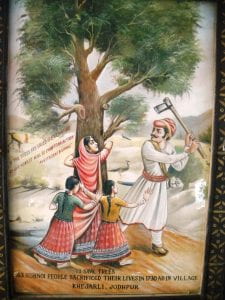 For many years, women have been at the forefront of environmental issues. The Chipko movement is a good example of this. In the 18th century, the Chipko movement began in India. Women from 84 villages throughout India, followed a woman called Amrita Devi to risk their lives in an attempt to protect the trees from being felled. After this movement, the Maharaja granted protection for the trees. In 1973, the movement surfaced to protect the trees once again. These protests led by women were successful. “By 1980 the Chipko protests won a victory of a 15 year ban on green felling in the Himalayan forests.” “Unity is power, without unity women cannot fight for their rights anywhere.” (Nawal El Saadawi)
For many years, women have been at the forefront of environmental issues. The Chipko movement is a good example of this. In the 18th century, the Chipko movement began in India. Women from 84 villages throughout India, followed a woman called Amrita Devi to risk their lives in an attempt to protect the trees from being felled. After this movement, the Maharaja granted protection for the trees. In 1973, the movement surfaced to protect the trees once again. These protests led by women were successful. “By 1980 the Chipko protests won a victory of a 15 year ban on green felling in the Himalayan forests.” “Unity is power, without unity women cannot fight for their rights anywhere.” (Nawal El Saadawi)
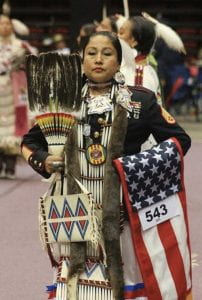
Indigenous men and women in South Dakota in the area of Standing Rock Indian Nation have been fighting against the Dakota pipeline for years. Women describe being brutalized by police, which they believe is attributed to their being “brown and female” (Mclaughlin). Prairie Mc Laughlin tells a story of being arrested and stripped by male and female officers when she refused to strip naked upon her arrest for protesting. Brenda White Bull, a descendant of Sitting Bull spoke at the UN about how women were being treated by military and police forces at Standing Rock. https://youtu.be/36NO4EiYb78
 The story of Standing Rock is a similar situation that affected Alaska with the construction of the Alaskan Pipeline in the 1970’s. Environmental groups tied up the construction of the pipeline in court battles for years. The oil company eventually won and was able to build it, but only under very strict environmental laws that were to protect land, water, and animals. In the case of the Alaskan indigenous people who fought against the pipeline, the oil companies and the U.S. government agreed to settle with them for $1 B, and 44 million acres of land. To this day, some of the indigenous people of Alaska believe that they were treated fairly. They not only benefitted economically from jobs constructing the pipeline, but they also believe that had the oil companies not approached them for the land, they would still be fighting the United States government for their land rights.
The story of Standing Rock is a similar situation that affected Alaska with the construction of the Alaskan Pipeline in the 1970’s. Environmental groups tied up the construction of the pipeline in court battles for years. The oil company eventually won and was able to build it, but only under very strict environmental laws that were to protect land, water, and animals. In the case of the Alaskan indigenous people who fought against the pipeline, the oil companies and the U.S. government agreed to settle with them for $1 B, and 44 million acres of land. To this day, some of the indigenous people of Alaska believe that they were treated fairly. They not only benefitted economically from jobs constructing the pipeline, but they also believe that had the oil companies not approached them for the land, they would still be fighting the United States government for their land rights.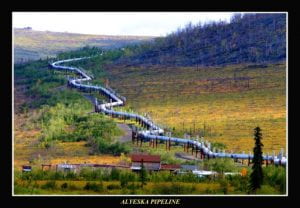
These cases are clearly examples of environmentalism vs. capitalism. The oil companies have deep pockets, they can easily come in and influence politicians to get what they want. Big corporations lobby for their causes in Congress, and can help write laws to benefit themselves. Once they have the backing of the United States Congress, they can tap into military and police forces to aid in their projects to completion. That is exactly what happened in South Dakota. Unfortunately, in South Dakota, they are using police forces to get what they want rather than with financial incentives. Oil companies who have the backing of the government pull the rug out from under indigenous people. It’s a complete abuse of power and greed at the cost of women and children, who often times feel the brunt. In the case of South Dakota, the men are offered jobs away from the family. The women are left to raise the family alone. Women are being raped and attacked by male pipeline workers who come in to the work camps. A clear example of how women and nature are taken by male domination.
Another indigenous tribe in North America are the Inuit of Canada. In a Q&A interview with Maatalii Okalik, President of the Inuit National Youth Council, Michele Rosano writes about the struggles women of the Inuit tribe face because of climate change. “Inuit women have a close relationship with food security” (Maatalii). In the Inuit tribe, women are responsible for cleaning, and drying animal skins to clothe their families. Many of these women claim that the changing climate has affected the animals skins. Leading to poor quality. Inuit men are responsibility for hunting, but because of “ the warmer climate, the sea ice is thinner, and men go missing while hunting, leaving women alone to raise their children, a problem that is on the rise within the tribe” (Okalik).
These stories continue throughout the world. As we learned about the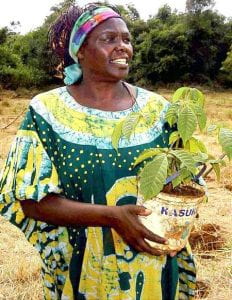 Green Belt Movement in Africa, we are reminded again how women are subjugated. Starvation is a real threat among many women and children in African countries. The Green Belt Movement, created by Wangari Maathai, empowers women through planting trees. By urging women to plant trees, she is setting them up for sustainability. Her movement is powerful, it has spread all over Africa into the U.S. and Haiti. In Kenya alone, women have planted 20 million trees. “When you plant a tree and see it grow, something happens to you. You want to protect it, you value it” (Maathai). I can’t agree more with this feeling. I had a vegetable garden for years, and it was not only therapeutic for me, it was satisfying to step outside my door and pick ripe tomatoes to feed myself and family. I nurtured my garden, in return it yielded many vegetables that nourished us. I agree there’s power, pride, and self satisfaction in that, especially for a woman.
Green Belt Movement in Africa, we are reminded again how women are subjugated. Starvation is a real threat among many women and children in African countries. The Green Belt Movement, created by Wangari Maathai, empowers women through planting trees. By urging women to plant trees, she is setting them up for sustainability. Her movement is powerful, it has spread all over Africa into the U.S. and Haiti. In Kenya alone, women have planted 20 million trees. “When you plant a tree and see it grow, something happens to you. You want to protect it, you value it” (Maathai). I can’t agree more with this feeling. I had a vegetable garden for years, and it was not only therapeutic for me, it was satisfying to step outside my door and pick ripe tomatoes to feed myself and family. I nurtured my garden, in return it yielded many vegetables that nourished us. I agree there’s power, pride, and self satisfaction in that, especially for a woman.
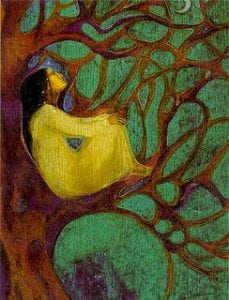 These examples I’ve provided herein are further proof of what ecofeminists have been saying for years. Women and nature are subjugated by men in the name of capitalism, power, and greed. By taking natural resources, and degrading the environment, women and children are left to find creative ways to try and survive. Programs like the Green Belt Movement do help, but it’s not available everywhere. We need more education, and laws that protect indigenous women and children around the globe. We need to become more aware of the connection of patriarchy and environmental degradation. Women can pull themselves out of these dire situations with just a little bit of education, and support from other women. These stories are why feminism, and Ecofeminism are so important for women and children everywhere.
These examples I’ve provided herein are further proof of what ecofeminists have been saying for years. Women and nature are subjugated by men in the name of capitalism, power, and greed. By taking natural resources, and degrading the environment, women and children are left to find creative ways to try and survive. Programs like the Green Belt Movement do help, but it’s not available everywhere. We need more education, and laws that protect indigenous women and children around the globe. We need to become more aware of the connection of patriarchy and environmental degradation. Women can pull themselves out of these dire situations with just a little bit of education, and support from other women. These stories are why feminism, and Ecofeminism are so important for women and children everywhere.
Annotated Bibliography
Maatalii Okalik, is an Inuit woman who grew up in Canada in a traditional Inuit family. She is 27 years old, and the recipient of the 2017 inspire award. She is a political advocate and has been called the voice of the next generation. She is the president of the National Inuit Youth Council and promotes Inuit language and culture among her peers and children. She also does work on suicide prevention education. She spoke at Canada’s parliament to address the senate on indigenous rights. She also spoke to the Cop22 in Morocco. She’s studying for her degree in human rights and political science with a minor in aboriginal studies.
Sources:
Corrêa, Talita. “The Brazilian Slum Children Who Are Literally Swimming in Garbage.” Vice, 30 Jan. 2014, www.vice.com/en_us/article/kwpwja/the-brazilian-slum-children-who-are-literally-swimming-in-garbage-0000197-v21n1.
Gebara, Ivone. “Ecofeminism: A Latin American Perspective .” https://umassd.umassonline.net/bbcswebdav/pid-1572276-dt-content-rid-15309576_1/courses/D2930-12852_MASTER/Ecofeminism_a_Latin_American_p.PDF.
www.cstraight.com, Cstraight Media -. “Key Speeches & Articles.” Speak Truth to Power | The Green Belt Movement, 4 May 2000, www.greenbeltmovement.org/wangari-maathai/key-speeches-and-articles/speak-truth-to-power.
Levin, Sam. “At Standing Rock, Women Lead Fight in Face of Mace, Arrests and Strip Searches.” The Guardian, Guardian News and Media, 4 Nov. 2016, www.theguardian.com/us-news/2016/nov/04/dakota-access-pipeline-protest-standing-rock-women-police-abuse.
Politis. “Q&A With Maatalii Okalik.” Canadian Geographic, 13 June 2016, www.canadiangeographic.ca/article/qa-maatalii-okalik?platform=hootsuite.
“The Chipko Movement.” The Chipko Movement, edugreen.teri.res.in/explore/forestry/chipko.htm.
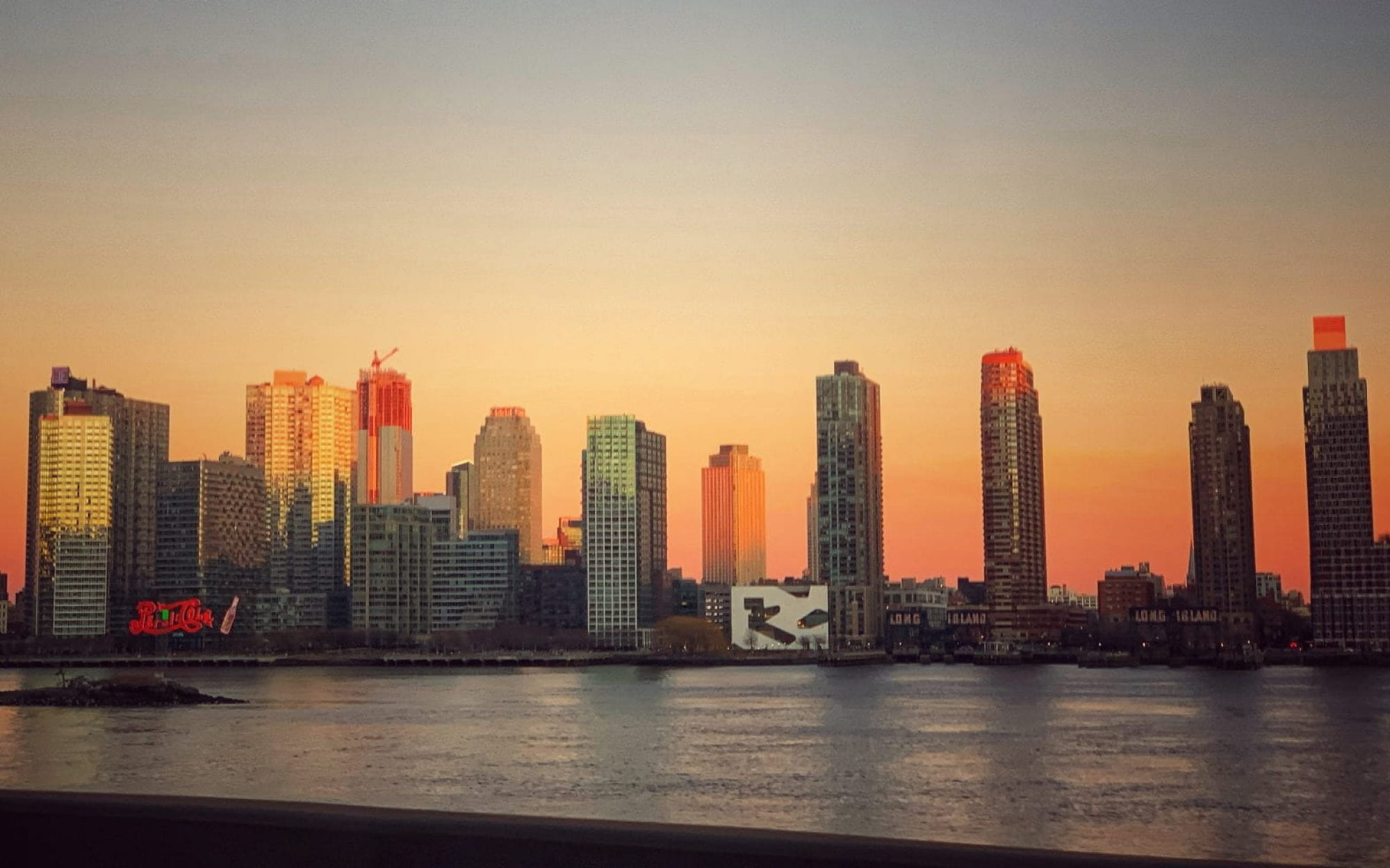


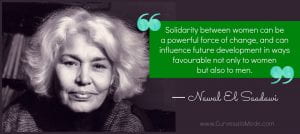
Hello Tonya great response. Throughout this activism unit I have been consistently reading that as you said “environmental degradation affects women and children more drastically than men in regions all over the world” so far I have understood some of that argument but am not fully convinced. The example of the water carriers in Africa is definitely something I can understand but at most what I have been convinced of is that women in certain regions are uniquely impacted by climate change and environmental degradation but when it comes down to it, when there is no agriculture, when you can’t grow food, when your community is filled with garbage and pollution, when drought prevents you from accessing clean water, isn’t it all humans that suffer?
You mentioned “indigenous women are responsible for feeding, clothing, and fetching water for their families” but what are men doing during this time? Surely it is affected by the environment, again this shows me that women are UNIQUELY impacted but the severity is impossible for me to determine without more information. All that being said your mention of the ways the Christian Church oppresses women in Brazil in a point very well taken, I think women are potentially in a position where because they are often more marginalized than men, they have less resources to combat climate change.
What I have little disagreement with overall in this unit is that women (especially indigenous women) are at the forefront of environmental activism. Standing Rock, Earth Day, The Chipko Movement are all great examples of this. I would take issue with your summation of these issues being strictly “environmentalism vs capitalism” as while it is oil that is to blame, when you look at oil rich countries like Venezuela that are giving a lot of countries this oil, in order to fund their state programs, done in response to a crippling economy, I think it goes deeper than just who controls the means of production.
It may not seem like it but I did enjoy your post and found it all insightful. I have a habit of not being good at making conversation and giving positive feedback. I find putting issues I don’t agree with a lot easier and sometimes the only thing I can think to say is something critical, I mean no offense by it.